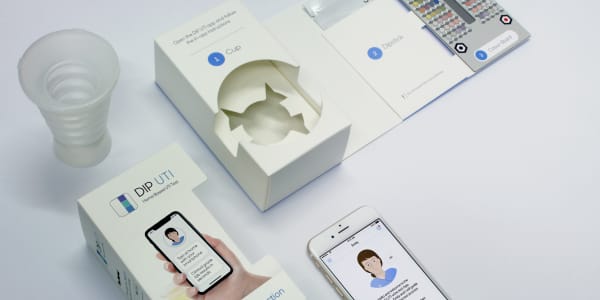The Apple Watch, Fitbit and other popular wearable trackers today can monitor steps, heart rate, and even sleep.
But what will they be able to do in five years?
These technology companies are in a race to develop new biosensors that can track a whole lot more about the human body.The hope is that a new wave of technologies would open up more opportunities to detect medical problems like abnormal heart rhythms, using consumer-friendly devices that people will be comfortable wearing everyday.
Here's what's coming next, according to 3 biomedical experts interviewed by CNBC.
Tracking blood pressure without piercing the skin
Tushar Parlikar, product manager for Alphabet Verily's wearables program
Who needs it? If such a sensor existed, it would be a user-friendly and continuous way to monitor people with high blood pressure, who are at a higher risk of heart disease, diabetes and strokes, as well as to monitor overall heart health. The promise of such technologies is to catch potential problems long before they're life-threatening.
Who's working on it? Many academic and industry groups, according to Parlikar, including Harry Asada's robotics team at MIT, and cardiovascular researcher Ramakrishna Mukkamala at Michigan State University. A variety of venture-backed start-ups are also working on it too, with mixed success.
Why is it so challenging? Parlikar said there have been several attempts to estimate blood pressure non-invasively using optical sensors, with a slew of different methods. But most have resulted in inaccurate or inconsistent results.
Where would a wearable fit on the body? The wrist, ear canal, face and chest are all options, says Parlikar. And that makes it an attractive possibility for smartwatch makers.
What's the timeline? Parlikar isn't particularly optimistic about what he calls "pulse transit time" methods, which have been tried for decades. But for all other methods, including measuring the the velocity of the pulse wave, he thinks it's probably several years away.
Tracking blood sugar, no needles required
Dr. Chris Thomas, research fellow and director of biosensor technology for the Abbott diabetes' care business
Who needs it? Some 29 million people in the U.S. alone have diabetes, and could benefit from this technology to track their blood glucose levels. Today, the state-of-the-art devices like Abbott's FreeStyle Libre still rely on tiny needles to pierce the skin — it's minimally invasive and not non-invasive.
There's also a growing trend of people measuring their blood sugar to find out how they react to certain foods and to exercise, and use that information to live better, for longer.
Who's working on it? A better question might be "who isn't working on it?" Many companies and people have "tried and failed" over the years, said Thomas, prompting a book detailing all of these attempts. The latest company to give it a shot is Apple, which CNBC reported has a team in Palo Alto doing just that.
Why is it so challenging? Other biological molecules look like glucose to the tools that are used to look through the skin, Thomas explained. Moreover, while some approaches have worked well in a lab, they fail to provide accurate results when used in the real world.
What's the timeline? "For the past 15 years, non-invasive glucose devices have been considered five years away," said Thomas. "For now, maybe it's three to five years away." It could also be longer, he suggests, depending on the regulatory requirements.
Tracking mental health with digital tools
Erik Reinertsen, data scientist and MD/PhD candidate at Emory and Georgia Tech
Who needs it? Drug companies that are looking to understand mental health outcomes for their clinical trials; patients and their providers who want to pick up on early warning signs; and hospitals that are looking for better indicators into patients' health status.
Why is it so challenging? It's never easy, explains Reinertsen, to extract information and turn that into a conclusion about a person's health. And wearable devices, like smartwatches, often provide very weak signals.
Who's working on it? Many in the technology industry are thinking about the "digital phenotype." They hope the personal technologies that people use every day can provide some insight into mental health status. Some, like former Alphabet mental health expert Thomas Insel, are working on ways to correlate keyboard use patterns with outcomes like depression and mania.
Where would it fit on the body? Almost anywhere: The wrist via a smartwatch, the pocket via a smartphone, anywhere on your skin via sensor-laden patch. Or, such technologies might also be present in cars, wi-fi routers and other household tools.
What's the timeline? 2 to 5 years, suggests Reinertsen, depending on advances in signal processing and machine learning technologies. But it might take 10 years to get to market, as companies will need to figure out how to get paid for these sorts of tools.





